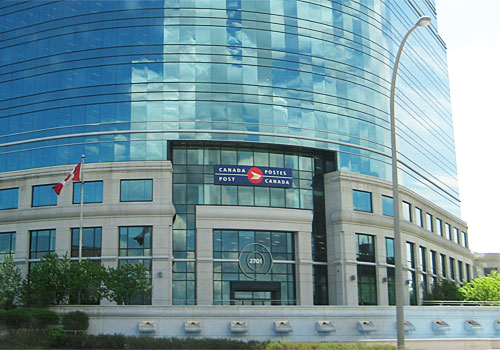
The impact of climate change on the postal service
This morning I was listening to a programme on global geo-engineering, which sounds very grand, and to be honest quite frightening – the thought of manipulating the weather systems on a global scale – with unknown consequences.
But this story made me think about the impact of climate change on the postal services around the world. OK, in a blog post I am not going to go into a huge amount of details but I can at least, hopefully, get you thinking about the medium term impact of our current change in weather patterns – whether this is man made or not I will leave up to your judgement!
Weather: We have seen around the world that weather systems are changing and becoming more extreme. This phenomenon brings problems for the postal services whether that is snow, drought, earthquakes or winds, they all cause headaches for delivery of services. I was speaking to friends in Connecticut over the weekend and they had been without power for six days as high winds had brought trees down and with it the power lines. Interestingly for many residents the mailman was the only form of ‘formal’ communication they have had. These types of events seem to be happening on an increasingly frequent basis and aging infrastructures and utilities etc. are having difficulty coping with the after effects. These events will continue to place pressure on those trying to service the basic needs of the community for water, power, communications and health care.
Resources: The availability of an infinite supply of resources will start to decline over the next 30 – 50 years. Water, oil, wood etc. will all become scarcer and therefore more expensive. One scenario could be that paper becomes a very expensive commodity as it takes quite large amounts of all these resources. The move to hybrid and electric vehicles is something that the postal services, if they are going to survive, must implement for when the cost of oil and petrol increase as supply potentially declines.
People: Climate change will potentially impact where people live and thereby where they want things delivered to. Rising sea levels have been projected for some time and although there are some small signs of this taking place the full impact could be quite devastating for coastal dwellers. If coastal areas are abandoned then the urban, non coastal, areas will become very crowded and this will place increasing demands on the social infrastructures, including mail. A second consequence of climate change is the working conditions for staff – the current trend seems to be hotter summers and colder winters, well for the UK anyway. This means that things like air conditioning, historically an American phenomenon, will need to come to more temperate areas – although current air-conditioning is relatively energy inefficient and therefore alternatives may be needed which could include dramatic changes in working patterns and building design.
Economy: Global Warming has become political over the last few years and is seen as a way of raising taxes and ‘forcing through’ new legislation and controls. This will mean increasing taxes in travel, energy etc. to fund sustainability in public services. This argument is potentially weak as the link to human activity and climate change is still not proven and there are experts on both sides that will argue their case to great effect. However this will not stop governments using the guise of climate change as a reason to increase taxes. On a separate note the change in use of resources will place pressure on the historic economic superpowers as society adopts new resourcing models.
Volumes: Over the last few years there has been a fall off in letter volume traffic as communication moves from physical to virtual (Email etc.) as they are seen as greener and therefore more acceptable means of communication. There has been a corresponding increase in the volumes of parcel and packet traffic as people shop online. I would suggest that these trends will continue to a point in 10 – 20 years time when letter traffic reaches a low point, becoming uneconomical to fund and operate a national postal infrastructure. I have done some long-term modelling of these trends and I predict that this point will come around 2034 or sooner if there are significant changes in weather patterns which force a change in customer behaviour.
There are probably impacts in other areas but in this short blog post I can’t cover everything – the post would turn into a white paper or whatever the equivalent is.
Most of this is conjecture and although there are good reasons for much, I suggest this is only one scenario and there could be another where everything is great and the changes in global weather are only a blip in the normal cycle of weather patterns.
I have written a few papers on the above effects over the last few years and if you are interested in following any of this up please get in touch.
What are your thoughts?











